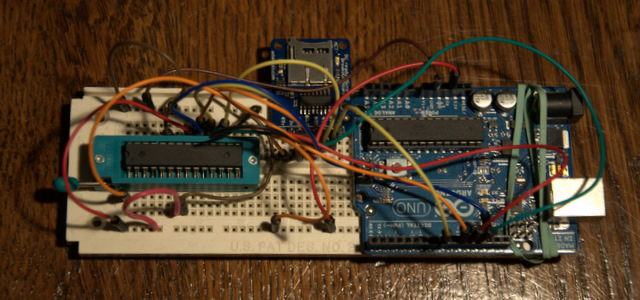Our first prototypes are back, and working quite well! SeeedStudio fabricated the prototype boards and quickly sourced the parts. The boards were of excellent quality. We ran into a few hiccups along they way, but Seeed Studio took care of them right away, and rushed to make up time.
If you haven’t been following, Anool Mahidharia, Justin Shaw and I from the Wyolum.com OSHW collaborative have been developing a stackable Arduino compatible for the Raspberry Pi.
While there are lots of emerging examples of interfacing hardware to the Pi, it’s just not as easy as the Arduino, and the Arduino already has hundreds of libraries for interfacing with motors, sensors, and displays. While you can always plug an Arduino into the USB port, but it’s not as neat and embed-able as a a GPIO interfaced board. You can write a program on the Pi in any language you want to control or monitor your Arduino application, making Internet integration and control super easy. In addition you can even program the AlaMode directly from the Pi.
Here are the features including a few extra goodies:
- Flexible power. Can be powered directly from the Pi, standalone with a battery or wall-wart, or USB power. This is important if your shield takes more power than the Pi can provide or if you want to undock it for standalone operation.
- Programmable via the Pi’s UART on the GPIO pins, or an FTDI USB-Serial adapter or ISP.
- Header for connecting Fastrax UP501 GPS.
- DS3234 Real time Clock. The Pi doesn’t have it’s own battery backed RTC. You can set a program in the AlaMode to report the time to the Pi via serial or I2C
- Micro-SD card slot. Useful for datalogging, and big-memory for your Arduino applications
- Row of Servo Headers connected to the PWM pins with a configurable power and ground rail
We’re in limited Beta right now, but as soon as it’s thoroughly tested, we hope to produce them for sale as soon as we can!







